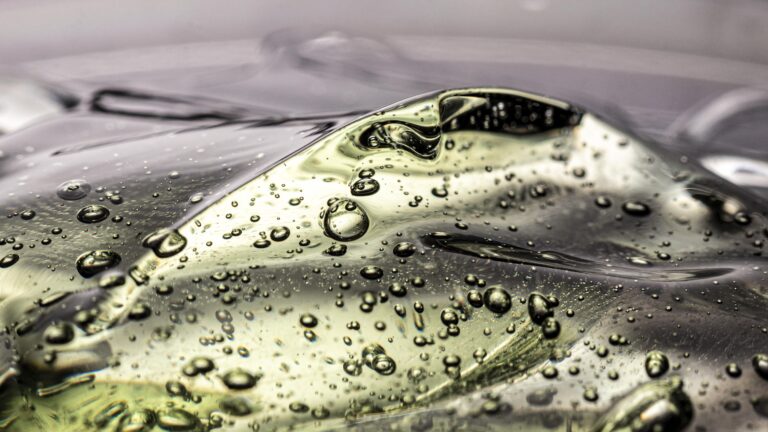High-Efficiency Silicone Defoamers for the Chemical Industry
In modern chemical processing, efficiency isn’t just a goal — it’s a necessity. Uncontrolled foam is a hidden enemy in many industrial systems. It disrupts processes, reduces output, and increases operational costs. That’s where silicone defoamers come into play. These powerful agents are the industry’s go-to solution for high-efficiency foam control, offering fast knockdown and long-lasting performance.
This guide breaks down everything chemical manufacturers, traders, merchants, and resellers need to know about high-efficiency silicone defoamers — from how they work to what makes them stand out in industrial applications.
What Is a Silicone Defoamer?
A silicone defoamer is a chemical additive used to eliminate and prevent foam formation in industrial liquids. It’s primarily composed of:
Polydimethylsiloxane (PDMS) – the core silicone oil that provides hydrophobic properties.
Hydrophobic silica – enhances foam-breaking capability.
Carriers or emulsifiers – to improve dispersibility in water-based systems.
These defoamers are preferred for their low surface tension, allowing them to spread quickly across foamy surfaces and rupture bubbles effectively.
Silicone vs. Non-Silicone Defoamers
| Feature | Silicone Defoamer | Non-Silicone Defoamer |
|---|---|---|
| Efficiency | High | Moderate |
| Dosage Required | Low | Higher |
| Thermal Stability | Excellent | Variable |
| Compatibility | Broad (pH, temperature) | Limited |
| Cost over Time | More economical | May increase with usage |
Why High Efficiency Matters
Foam isn’t just a surface-level problem. In chemical processing, excessive foam leads to:
Process delays and reduced throughput
Equipment overflow or damage
Inaccurate batch volumes
Quality control issues
A high-efficiency silicone defoamer minimizes these risks by delivering:
Rapid foam suppression on contact
Long-lasting stability even in high-shear systems
Lower usage rates, leading to cost savings
Consistent performance across variable process conditions
Key Applications of Silicone Defoamers in Chemical Industries
Silicone defoamers are used across a wide range of sectors. Here’s where they shine:
1. Paints & Coatings
Prevent surface defects (cratering, pinholes)
Maintain smooth film formation
Improve gloss and appearance
2. Pulp & Paper
Control foam in pulping, washing, and bleaching stages
Enable faster paper machine operation
Reduce fiber loss in white water systems
3. Water Treatment
Eliminate foam in aeration tanks and cooling towers
Enhance chemical treatment efficiency
Support compliance with environmental discharge norms
4. Detergents & Cleaning Agents
Control foam in industrial washing systems
Improve rinseability
Prevent machine malfunctioning
5. Fermentation & Food Processing (Food-grade silicone defoamers only)
Control biological foam during microbial fermentation
Enhance yield and reduce contamination risk
6. Adhesives, Inks, and Resins
Prevent air entrapment
Improve dispersion stability
Maintain product uniformity
How to Choose the Right Silicone Defoamer
Choosing the right defoamer isn’t just about picking any silicone-based product. Consider the following:
1. Application System
Aqueous or non-aqueous?
Choose a defoamer compatible with the medium.
2. Operating Conditions
Temperature and pH range
Select formulations stable under extreme process conditions.
3. Required Performance
Rapid knockdown or long-lasting suppression?
Some systems need a quick fix; others need durable action.
4. Product Format
Emulsion: Water-dispersible, easy to use in aqueous systems.
Compound: High activity, suitable for solvent or resin systems.
Self-emulsifying: Combines high activity and easy handling.
5. Testing & Validation
Use industry-standard methods like:
Dynamic foam analyzer (DFA)
Ross-Miles foam test
Stirred beaker or column test
Features of a High-Performance Silicone Defoamer
To be classified as high-performance, a silicone defoamer should offer:
✅ Fast foam knockdown in less than 30 seconds
✅ Persistent performance over extended periods
✅ Low viscosity and easy dispersibility
✅ No residue or product contamination
✅ Broad system compatibility (pH 3–11, 30–200°C)
✅ Low environmental impact and regulatory compliance
Silicone vs. Organic Defoamers: Which Is Better?
Here’s a quick breakdown of when to choose silicone:
| Criteria | Silicone Defoamer | Organic Defoamer |
|---|---|---|
| Efficiency | ✅ High | ❌ Moderate |
| Cost Over Time | ✅ Lower due to low dosage | ❌ Higher with repeated use |
| Residue/Contamination | ✅ Minimal | ❌ Possible buildup |
| Compatibility | ✅ Broad | ❌ Limited |
| Foam Suppression Speed | ✅ Rapid | ❌ Slower |
Verdict: For industrial-scale, high-output processes, silicone defoamers offer superior performance and long-term value.
Case Studies: Real-World Results
1. Resin Manufacturing Plant – India
Problem: Excessive foam during polymer emulsion mixing
Solution: Switched to a high-efficiency silicone defoamer (0.05% dosage)
Result: Foam eliminated in <15 seconds, improved batch cycle time by 18%
2. Water Treatment Facility – UAE
Problem: Foam overflow in aeration tanks, causing environmental violations
Solution: Introduced silicone emulsion defoamer
Result: Achieved 95% foam reduction and full compliance within 1 week
Tips for Traders, Merchants, and Resellers
If you distribute silicone defoamers, here’s how to stand out in the market:
✅ Know the Key Differentiators
Promote the low dosage requirement
Highlight fast action + long-term performance
Provide technical datasheets and comparison charts
✅ Offer Sample Testing
Let industrial clients test efficiency before committing
Demonstrates confidence in product performance
✅ Keep a Variety of Grades
Stock emulsions, compounds, and food-grade defoamers
Helps serve multiple industries from one portfolio
✅ Support With Documentation
MSDS, TDS, ROHS, REACH certificates
Lab test results, application guides
Available Products
TEGIFOM-JS
TEGIFOM-JS is textile water treatment defoamer is a kind of highly efficient defoaming agent with fast defoaming ability.
TEGIFOM-KS-520
This is a cost effective universal defoamer. With the excellent foams control ability, this defoamer is
TEGIFOM-MP-200
TEGIFOM-MP-200 Silicone defoamer is made of silicone oil as the basic component, with suitable solvent, emulsifier or inorganic filler

